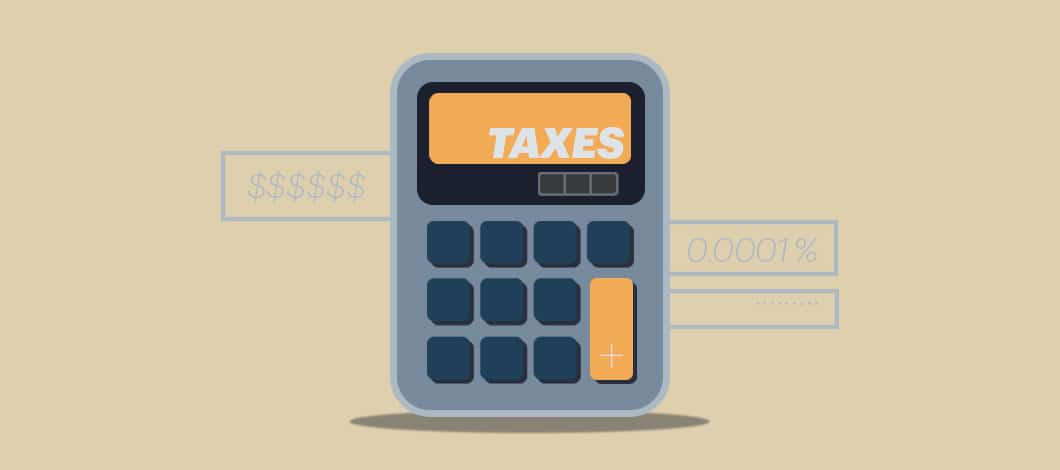Every business must collect certain payroll taxes from employees, and business owners need to know how to calculate payroll taxes.
While you can hire a payroll service to take care of the accounting, owners should understand how payroll tax works and the effects it can have on a business.
Let’s take a look at what payroll taxes are and how they are calculated.
What Are Payroll Taxes?
Payroll tax isn’t just one employment tax: It refers to all taxes paid on employee wages.
They fall into 3 categories:
1. Taxes Paid by Employers and Employees
Both employees and employers must pay taxes required by the Federal Insurance Contributions Act (FICA) to provide funds for the Social Security and Medicare programs. For one employee, these taxes total 7.65% together. Social Security takes 6.2% on wages up to an income of $137,700. Medicare taxes are 1.45% on all wages plus an additional 0.9% for incomes over $200,000. There is no limit on Medicare wages for taxes.
The employer must match each employee’s contribution with an additional 7.65% of wages, bringing the total FICA rate to 15.3%.
Self-employed individuals must pay the entire FICA taxes themselves. For these workers, they have to pay 12.4% in Social Security taxes + 2.9 to cover Medicare taxes, giving a total payroll tax rate of 15.3%. Self-employed individuals pay their taxes every quarter with their estimated taxes.
FICA taxes are mandatory and are automatically deducted from employees’ paychecks each pay period.
2. Employee Taxes
Employees must pay federal and state income taxes based on their filing status. When an employee first starts work, they need to complete a Form W-4. This form tells the Internal Revenue Service (IRS) how much income tax to withhold from their paycheck.
Each employee selects a filing status of single, married filing jointly, married filing separately or head of household. The employee also indicates the number of dependents they intend to claim on their tax return.
The employer uses this information to consult IRS tax tables and determine the correct amount of tax to withhold from the employee’s paycheck.
If a Form W-4 is filled out properly, the employee will neither owe the IRS a large balance at filing time nor have a large refund due. Taxpayers with large refunds are essentially giving the government a tax-free loan until they get their money back.
3. Employer Taxes
Employers must pay Federal Unemployment Tax Act (FUTA) and State Unemployment Tax Act (SUTA) taxes out of their own pockets. Employees don’t contribute to these unemployment taxes.
You must file a Form 940 and pay FUTA taxes if you paid $1,500 or more in wages to employees in any calendar quarter of the year. You also are liable for FUTA taxes if you employed one or more people for some part of a day in any 20 or more different weeks for either of the past 2 years.
The federal unemployment tax rate is 6% on the first $7,000 of an employee’s income. However, you get to deduct up to 5.4% as a credit for any state unemployment taxes that you paid. If you’re able to take the full 5.4% credit, your federal unemployment tax will be 0.6% of the first $7,000 in income. Any employee earnings above $7,000 are not taxed.
Unfortunately, not all states are eligible to claim the full credit. Some states have budget deficits and are forced to borrow from the federal government to cover the cost of their unemployment insurance. These states are known as “credit reduction states” and aren’t permitted to offer the full FUTA credit. You will have to check if your state is one of those that owes money to the federal government.
Employers don’t pay FUTA or SUTA taxes on contract workers who receive Form 1099s.

How to Calculate Payroll Taxes
Employers are required by the IRS to withhold a certain amount of income and FICA taxes from their employee paychecks and send those taxes every quarter to federal and state tax departments.
Avoid mistakes. Follow these 7 steps:
1. Have Employees Fill Out a W-4
The amount of taxes to withhold is based on the employee’s gross wages and the information provided by the employee on their Form W-4.
2. Calculate Gross Wages
The next step is to calculate the employee’s FIT taxable wages.
For employees paid by the hour, multiply their base pay by the number of hours they worked. For example, if they worked 40 hours in a week and were paid $15 per hour, their gross wages for the week would be $600. If an employee worked overtime, they would be paid at time-and-a-half the hourly rate times the number of overtime hours worked.
Salaried employees receive the same pay each pay period. Suppose you have an employee earning $60,000 per year and being paid 2 times per month. They would receive $2,500 in gross wages ($60,000 divided by 24 pay periods per year) for each pay period.
3. Calculate Federal Income Tax Withholding
The IRS provides 2 methods to calculate the amount of tax to withhold: the percentage method and the wage bracket method. The wage bracket method is generally considered the easier one to use.
Let’s take, for example, an employee who earns $52,000 per year and is paid semi-monthly. The employee claims single status and no dependents
Follow these steps to find the amount to withhold using the wage bracket method:
- In IRS Publication 15-T, locate the tables titled “Wage Bracket Percentage Method Tables.”
- Calculate the employee’s gross wages per pay period. In our example, the gross wages per pay period would be $2,166.67 ($52,000 divided by 24 pay periods per year).
- Find the table under “semimonthly payments” that includes the employee’s gross wages.
- Locate the wage bracket under the column for “at least” $2,150 “but less than” $2,180.
- Find the payroll tax amount to withhold for this employee under the column for single and standard withholding is $189 per pay period.
You can follow the steps to find the withholding amounts for different pay periods. The IRS has tables for monthly, semimonthly, biweekly, weekly and daily pay periods. Another option is to use an online payroll tax calculator.

4. Calculate FICA Taxes
Calculating the amount of FICA taxes to withhold isn’t as difficult to determine as the amount to withhold for federal income taxes. To find the amount of FICA taxes to withhold, simply multiply an employee’s gross wages by the appropriate percentage: 6.25% for Social Security and 1.45% for Medicare.
Let’s take the example of the employee who earns $2,166.67 in gross wages each semi-monthly paycheck. The Social Security taxes to be withheld would be $135.42 ($2,166.67 times 6.25%). Medicare taxes are $31.42 ($2,166.67 times 1.45%). The total amount of FICA taxes withheld from the employee’s paycheck would be $166.84,
This employee would receive net income on each semimonthly paycheck of $1,810.83 ($2,166.67 less withholding taxes of $189 and less FICA taxes of $166.84).
5. Match Employee FICA Contributions
In addition to the FICA taxes that must be withheld from employees paychecks, the employer is responsible for a matching amount. In our example, the employer would match the amount by also contributing $166.84.
6. Calculate Federal and State Unemployment Taxes
FUTA is a payroll tax paid by employers that is used to fund state unemployment agencies. Although the nominal payroll tax percentage is 6%, most employers only have to pay 0.6% because of the 5.4% given as a credit to states.
In our example, the FUTA calculation of the tax on the employee’s wages of $2,166.67 would be $13.00 paid by the employer ($2,166.67 times 0.6%).
You’ll report your FUTA taxes paid on Form 940 – Employer’s Annual Federal Unemployment Tax Return.
7. Deposit Federal and State Taxes
According to IRS regulations, employers are required to deposit the employment taxes as reported on their quarterly Form 941. These forms report the federal income tax withheld from your employees in addition to the employer’s and employees’ portion of Social Security and Medicare taxes.
The IRS uses the amount of employment taxes reported on your Form 941 to determine which deposit schedule you must follow: monthly or semiweekly. The IRS will review your 941 forms and tell you which deposit schedule to use.
To remit payments to the IRS, you must enroll in the Electronic Federal Tax Payment System (EFTPS) and make payments online. This is the only way to make tax payments since sending checks isn’t allowed.
Each state has its own rules for depositing income taxes. You’ll need to consult your state’s regulations to determine the correct deposit schedule.
Whether you decide to process your payroll and do the calculation of taxes yourself or use an outside payroll service provider, it is still your responsibility to make sure that the calculations are correct and paid before their due dates. Failure to make deposits on time could lead to a 15% penalty plus interest charges on the balances of taxes due.










